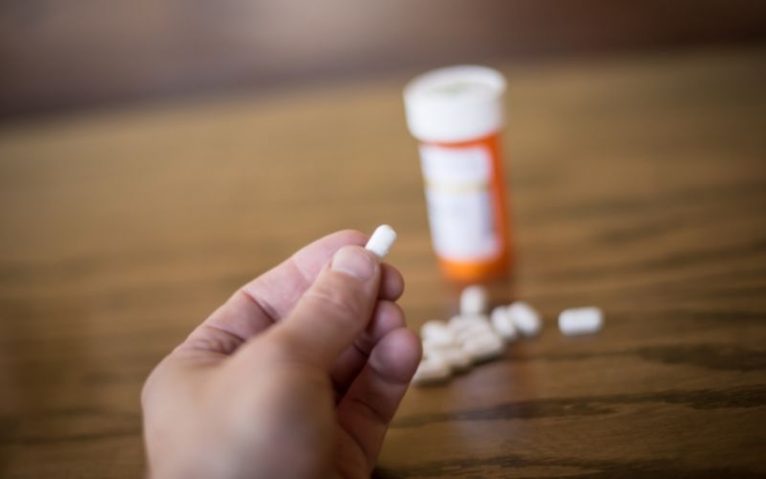Percs is short for Percocet, a potent prescription opioid used to treat moderate to severe pain after surgery or injury. While it’s a Schedule II drug, people of all ages and traits abuse percs regularly. In essence, percs are a combination of oxycodone with acetaminophen. It works like other highly addictive drugs such as heroin and morphine. It binds to the brain’s neurotransmitters and affects the central nervous system, changing the way our brains perceive pain.
How Does Percs Make You Feel?
The drug alters how your body feels and responds to pain, which is why it’s used to relieve pain conditions or post-surgical chronic pain. Like other opioid medications, people usually start getting high on Percocet by exceeding the recommended dose. This can be either taking more pills at once or take pills more frequently. Previously, people would tamper with pills to snort or inject them. It wasn’t until late 2010 that the Food and Drug Administration (FDA) requested changes to the pill form of oxycodone-based medications. After these formulation changes, the drug maker, Purdue Pharma LP, made breaking up the tablet almost impossible. Even if someone attempts to dissolve the tables for syringe use, the liquid becomes gummy and can’t be used as intended.
What Does Percs Look Like?
How Many Percs Does It Take to Overdose
Approximately 40mg of Percocet can precipitate overdose in someone without an opioid tolerance or dependence. That’s roughly 4 to 16 pills depending on the dosage of Percocet. But, people are much more likely to overdose from acetaminophen than oxycodone while abusing the drug. Most Percocet pills have 100 times more acetaminophen than oxycodone in their formulation. By the time someone overdoses, they’re likely to be experiencing liver toxicity due to an acetaminophen overdose. Early side effects of percs overdose include nausea, vomiting, diarrhea, and flu-like symptoms. If you notice any of these signs, call your doctor or pharmacist for assistance. If symptoms don’t dissipate, call 911 and seek emergency help from a healthcare professional. Signs of percs overdose include:
- Respiratory depression
- Clammy skin
- Coma
- A bluish tint to the lips or nails
- Slowed heart rate
- Constriction of the pupils
- Slowed heart rate
- Hypotension
- Circulatory collapse
- Cardiac arrest
How Long Does Percs Stay In Your System
On average, Percocet has a half-life in the blood of 3.5 hours, but this varies depending on liver function. This means it will take your system at least 19 hours to eliminate all Percocet. However, here’s how long can you still detect percs in your system:
- Blood Test: Up to 24 hours after the last dose
- Urine Test: Up to 4 days after the last dose
- Saliva Test: Up to 2 days after the last dose
- Hair Test: Up to 30 days to 90 days after the last dose
While the average time percs stay in your system is based on the drug’s composition, many factors play a significant role. Things like metabolism, age, other medications, and how long someone has been taking drugs play a role. For example, it’s known that adults over the age of 40 get Percocet out of their system at a slower rate than younger adults. Even gender influences. According to OxyContin, oxycodone (one of the components of Percocet) concentrations in healthy females are up to 25 higher than in males.
Addiction Treatment
Stopping percs suddenly and without the right assistance can lead to troublesome withdrawal symptoms. If you think you may have developed a dependence or addiction to Percocet, it’s essential to talk to a medical professional and mental health professional. Addiction treatment can help you address the physical and psychological effects of a substance use disorder. These treatments often incorporate various treatment options that include:
- Medical Detox: In this clinically supervised detox process at treatment centers, we ensure the patient’s safety and make the opioid withdrawal phase as comfortable as possible by minimizing withdrawal symptoms and using medication-assisted treatment services to guarantee a complete detoxification process.
- Rehab: These offer a temptation-free environment that’s designed to help people in recovery. In this case, people check into a living drug rehab facility, and they attend meetings and therapy sessions while remaining in a supervised environment.
- Intensive Outpatient Programs: When patients seek addiction treatment while maintaining daily obligations like work, school, or caregiving, IOPs are a more flexible option that still gives people access to the help they need.
- Medication-Assisted Treatment: Long-time addicts might experience worse withdrawal symptoms. To prevent these symptoms from harming them physically and psychologically, a physician might recommend specific prescription drugs to help through the withdrawal process under a medically supervised program.
If you or someone you love is struggling with substance abuse, ask for help immediately. Please, call Lighthouse Recovery Institute today at 866-308-2090 and speak with our addiction specialists to learn more about our comprehensive and personalized addiction treatment programs.









